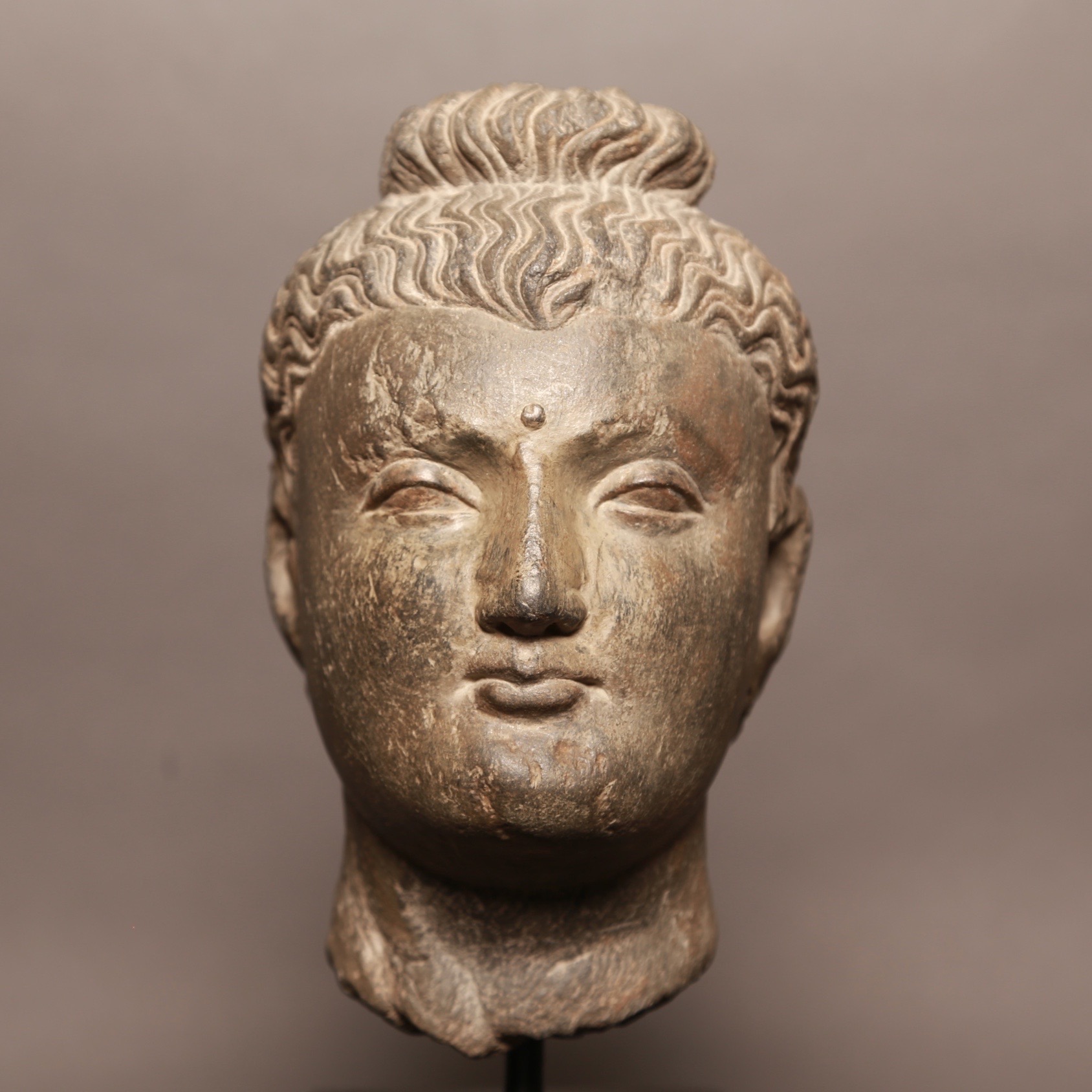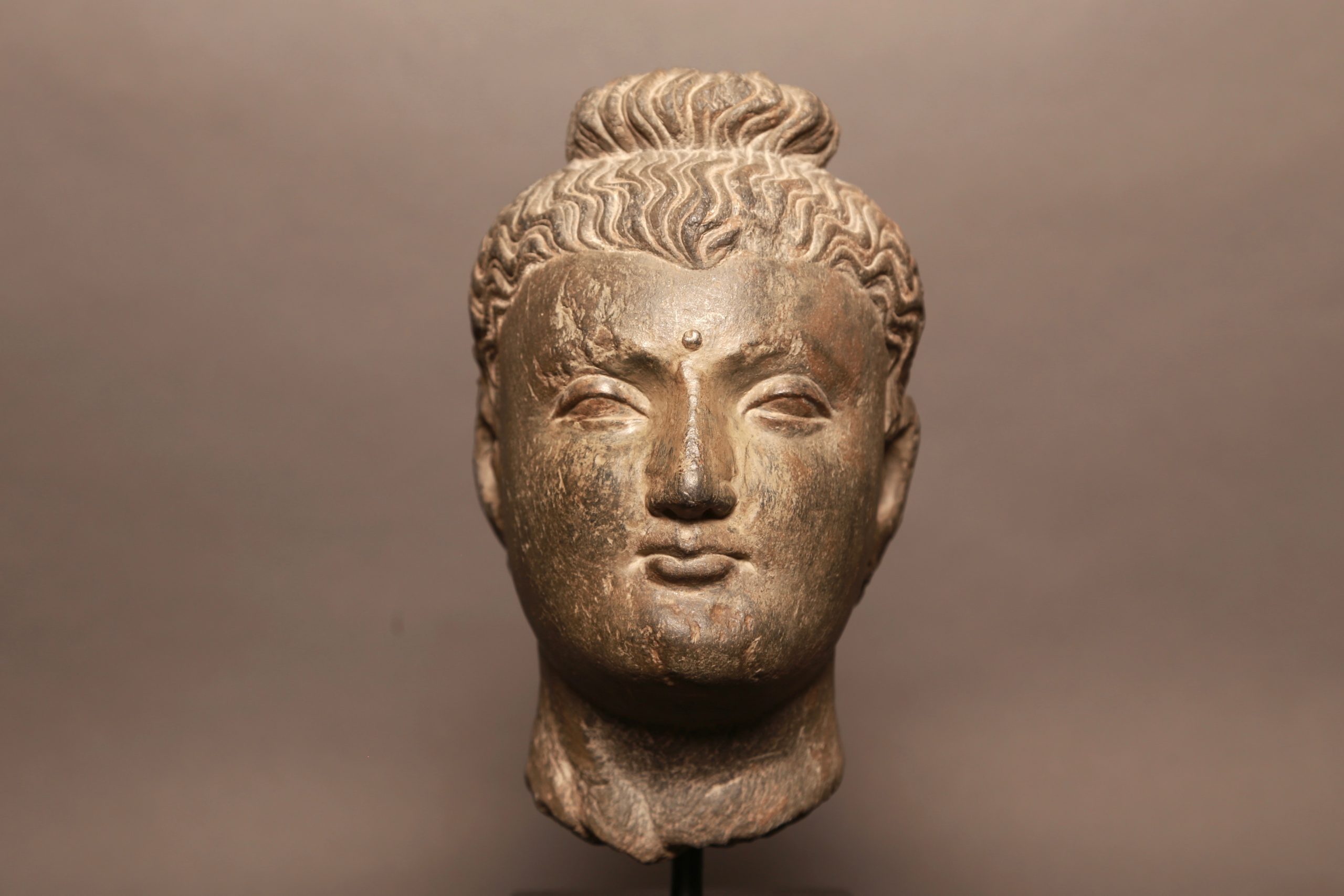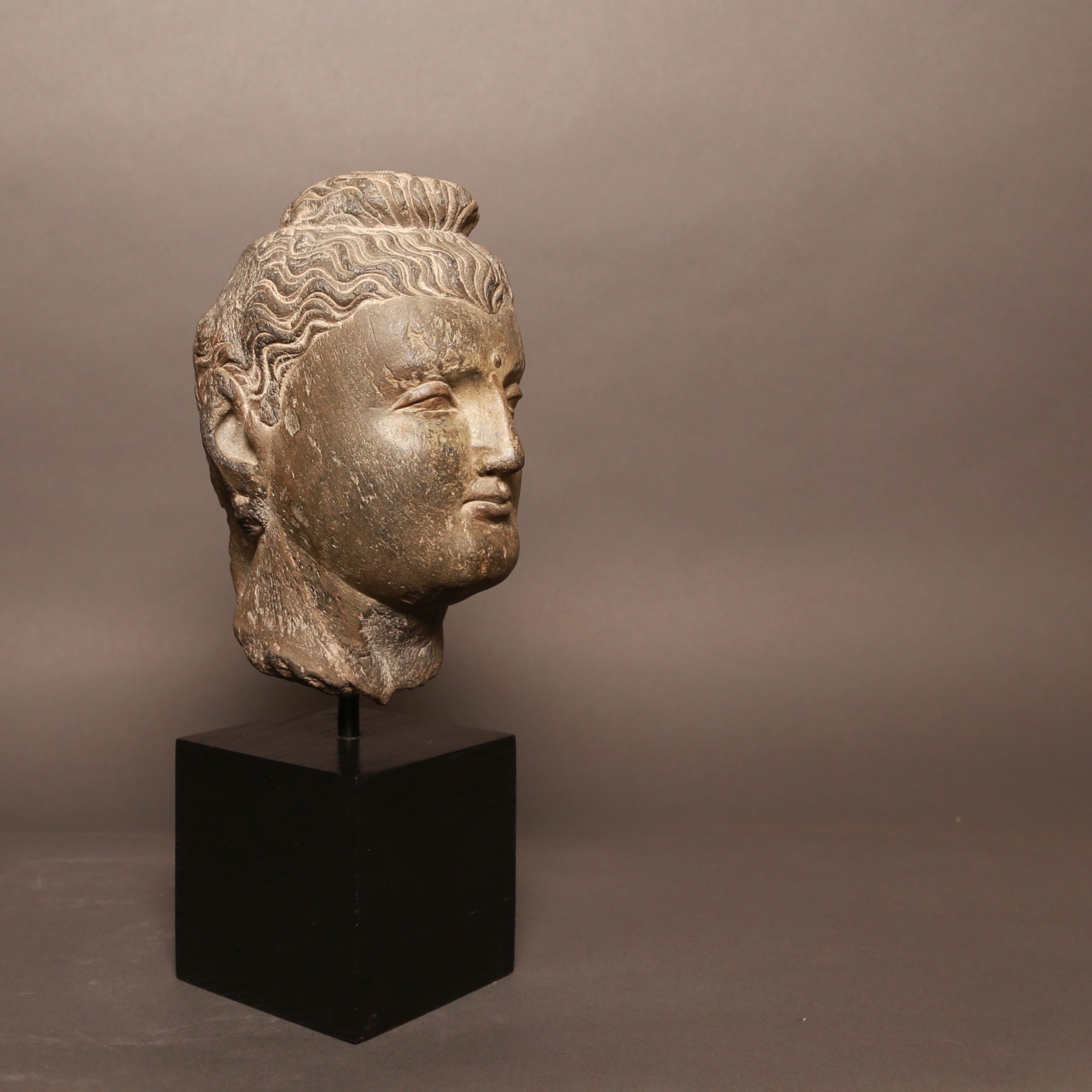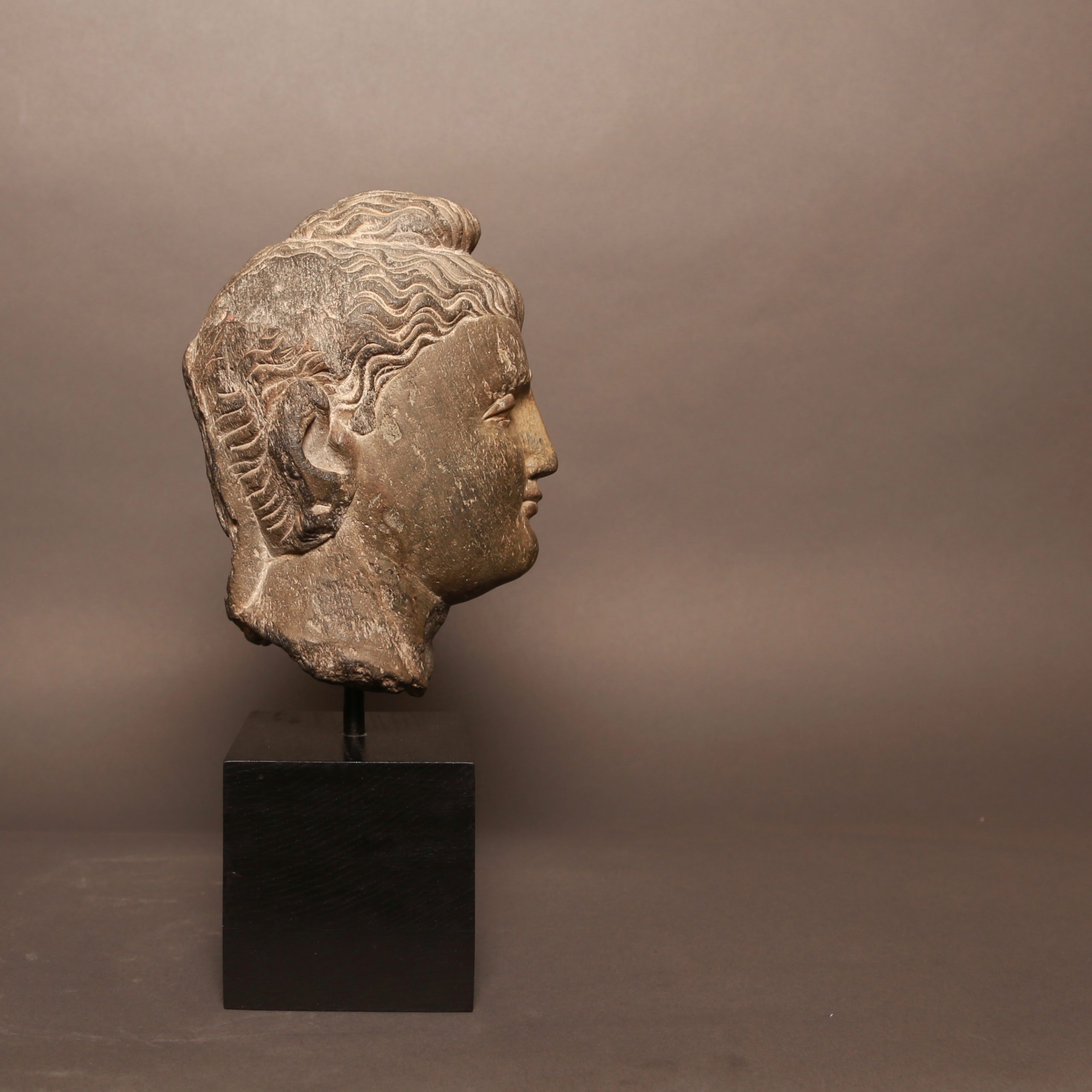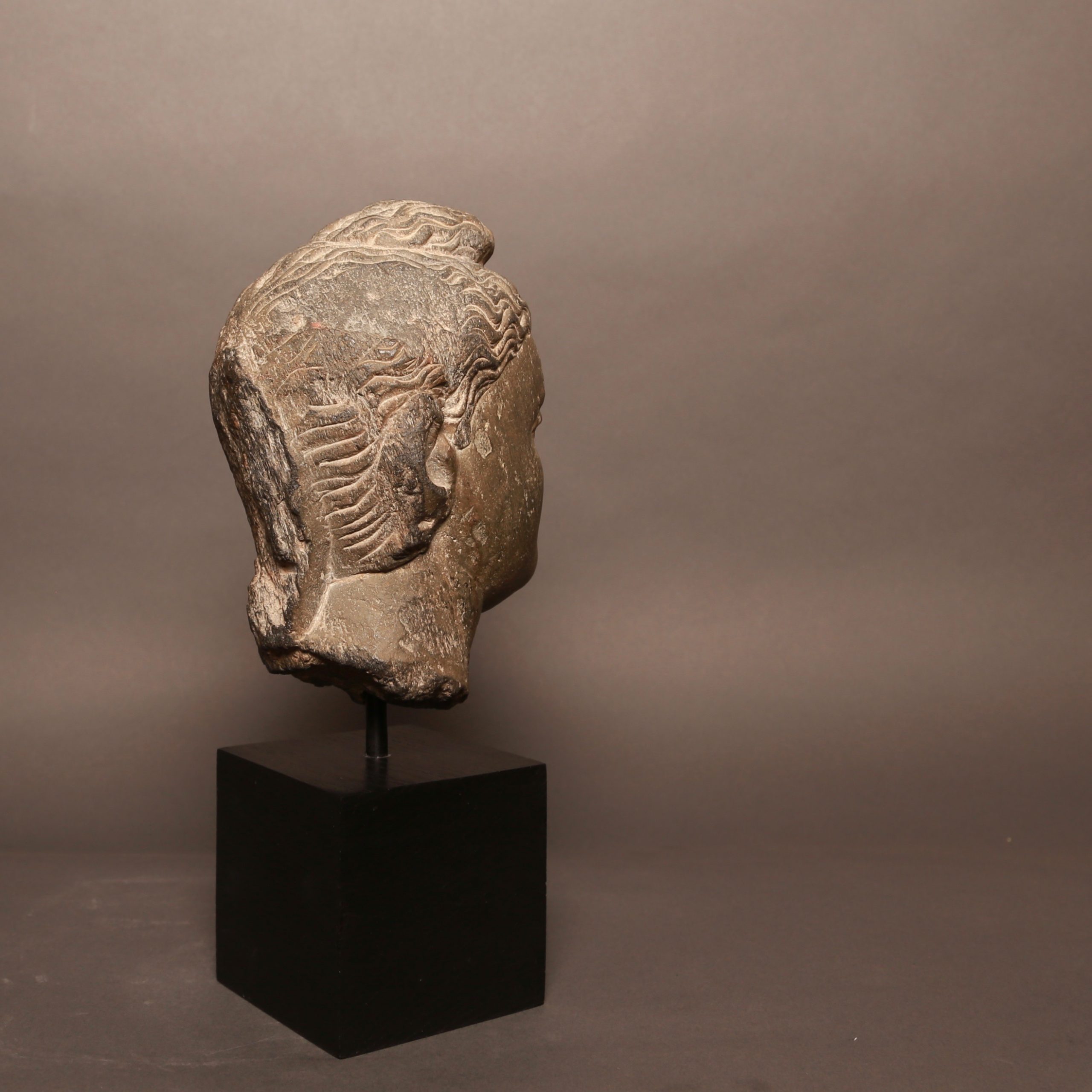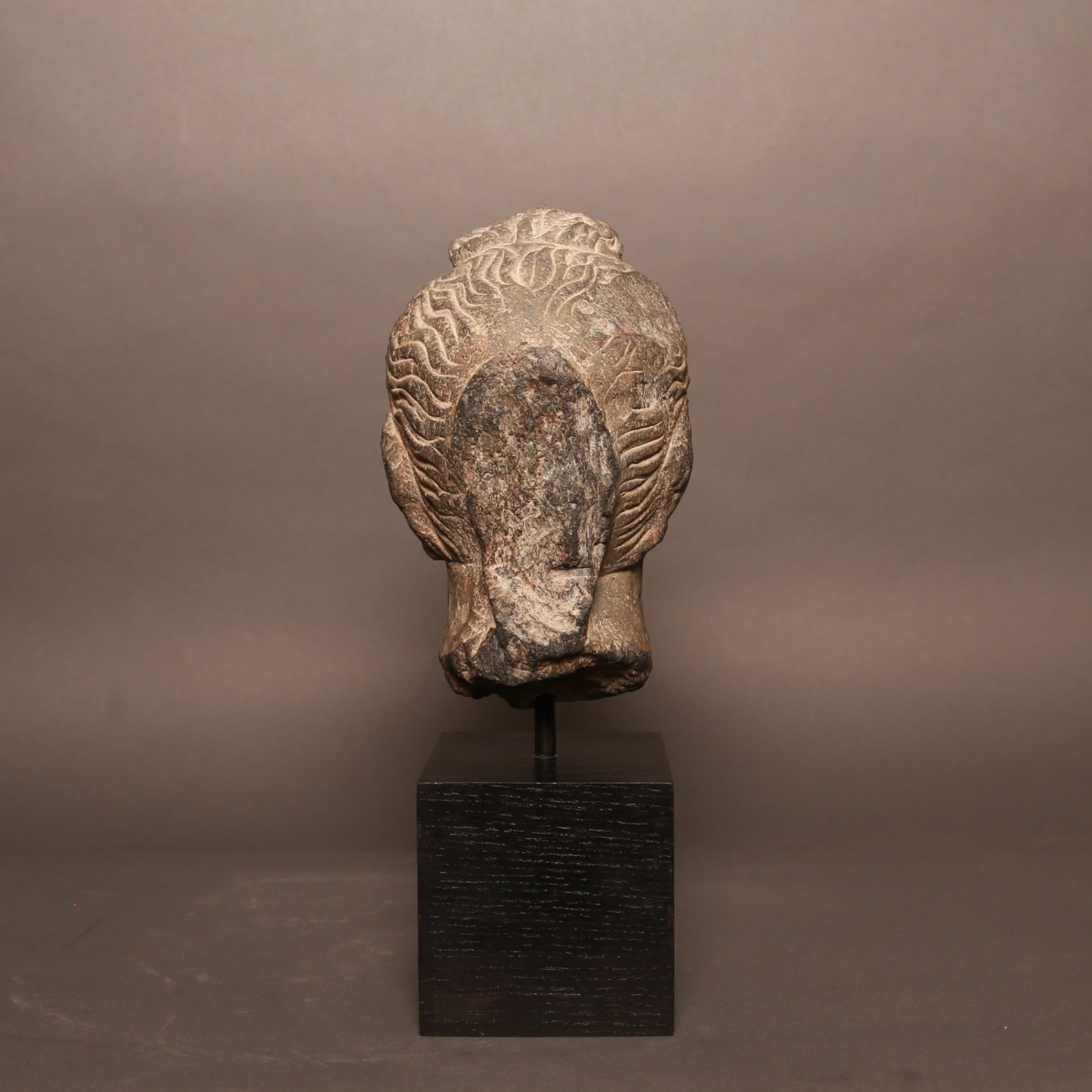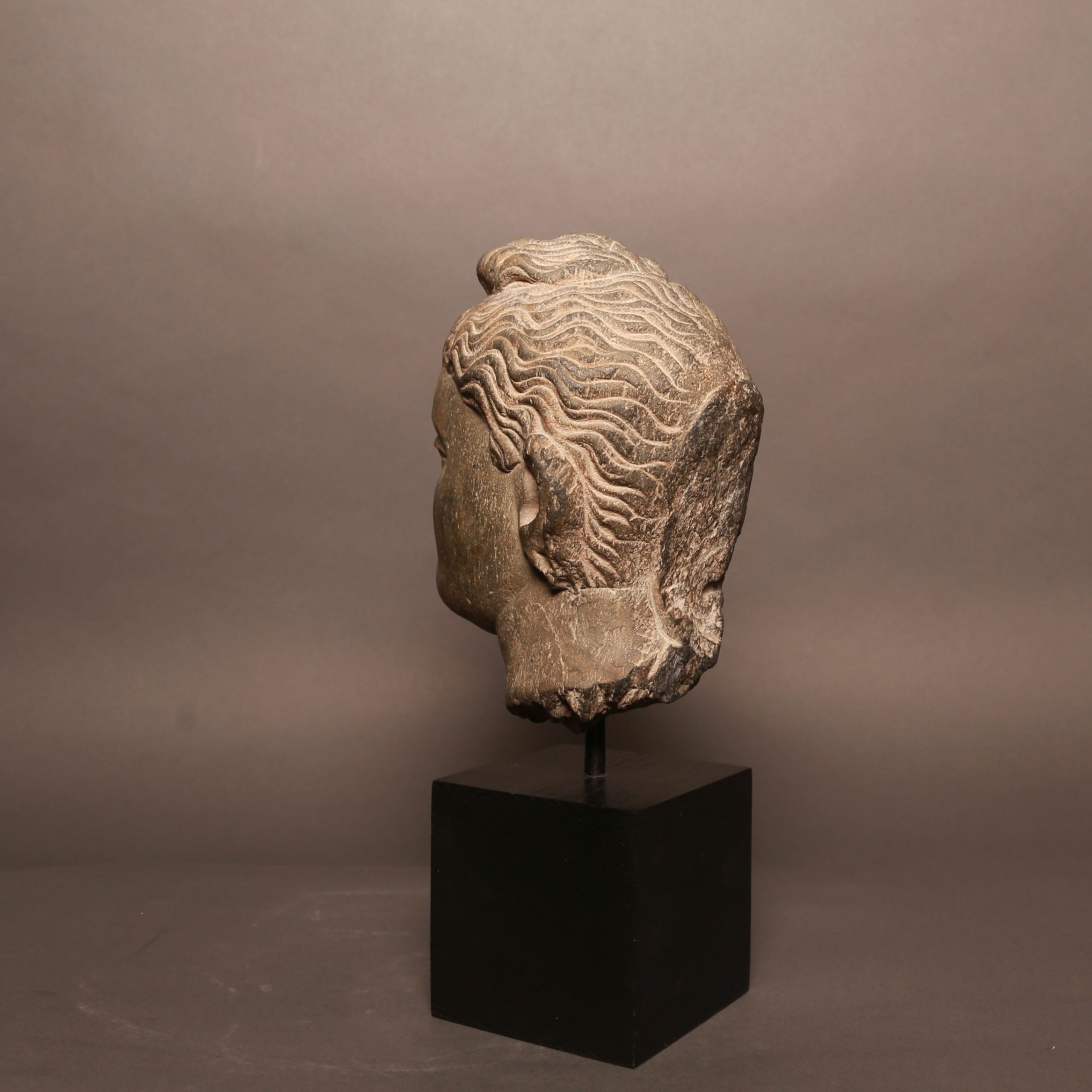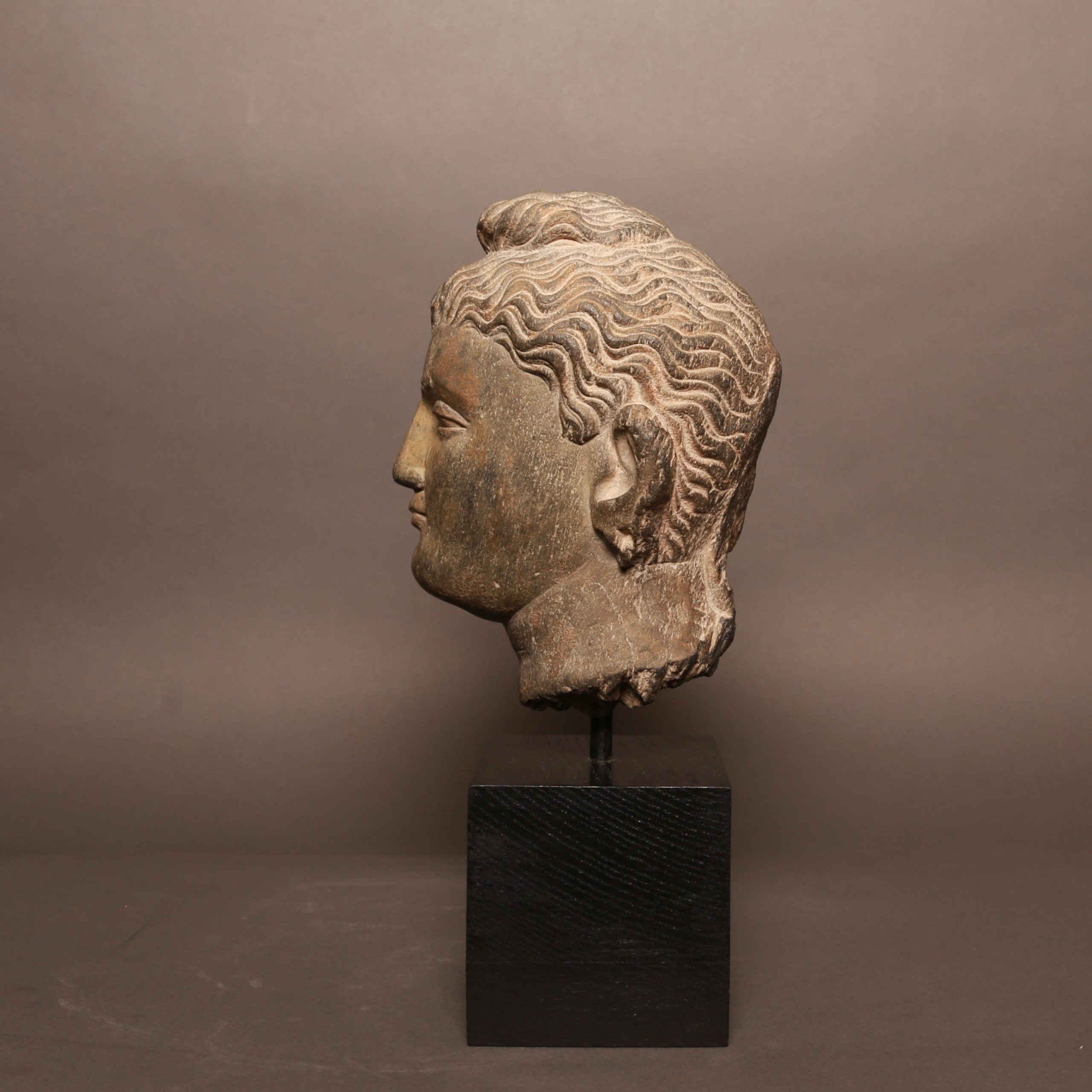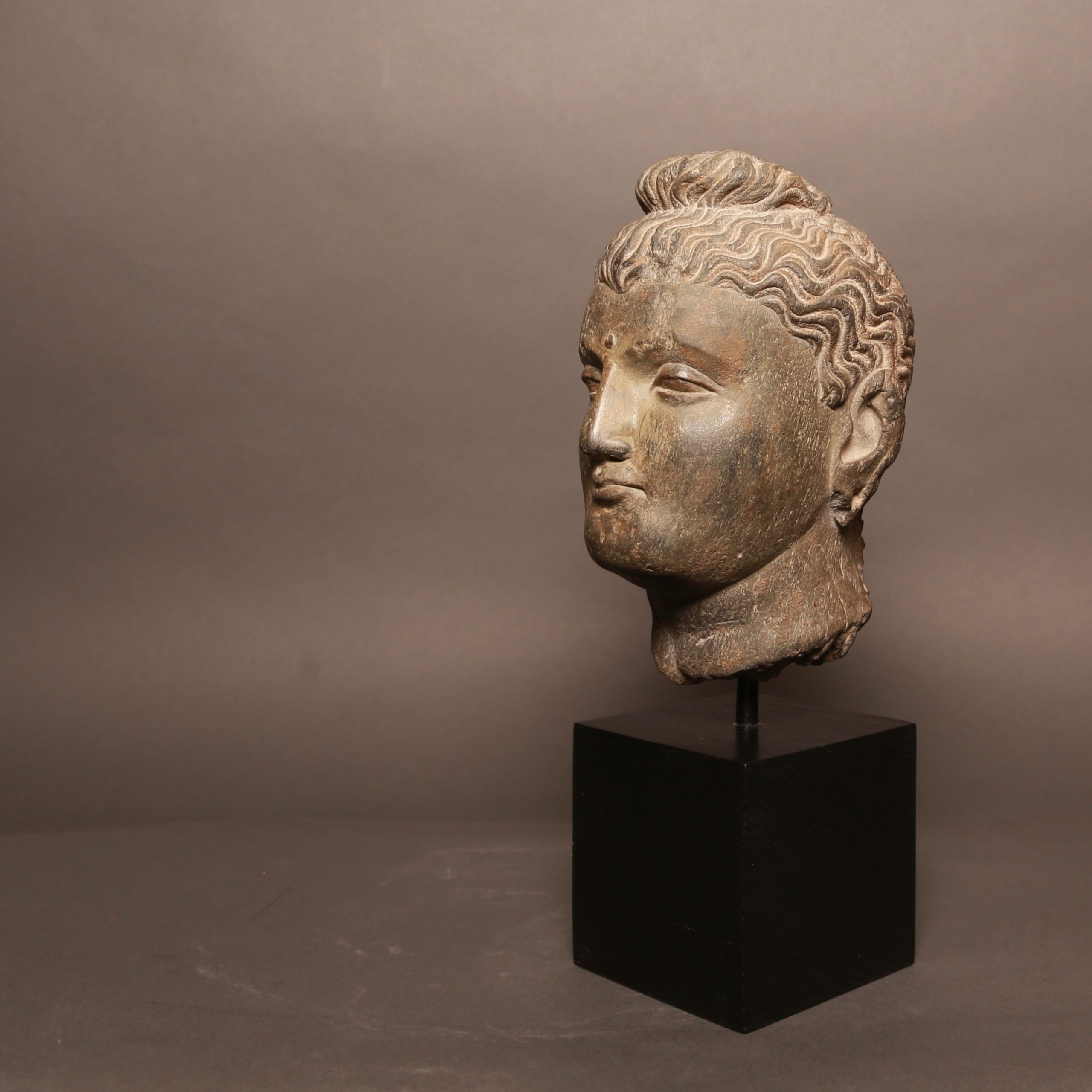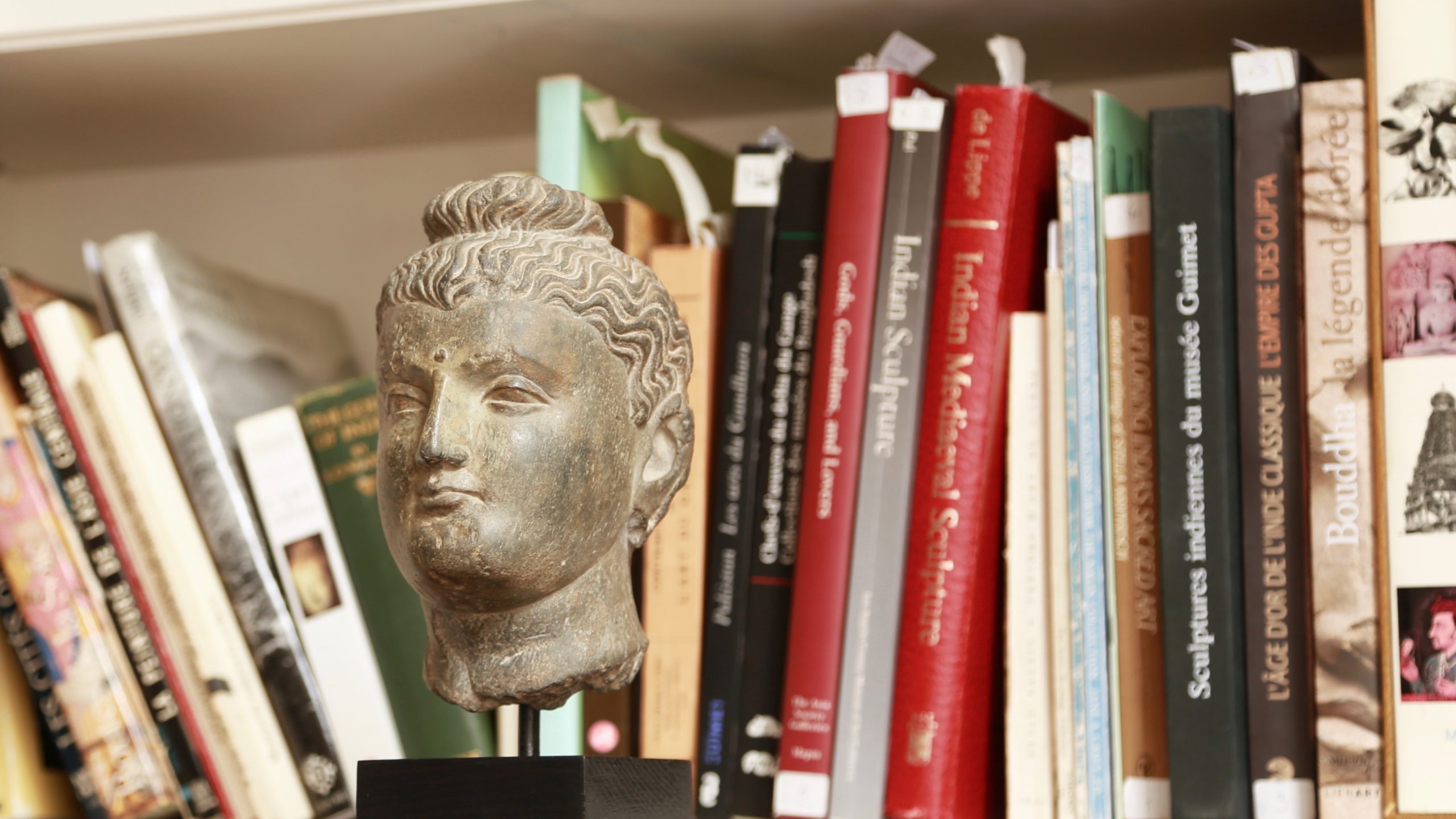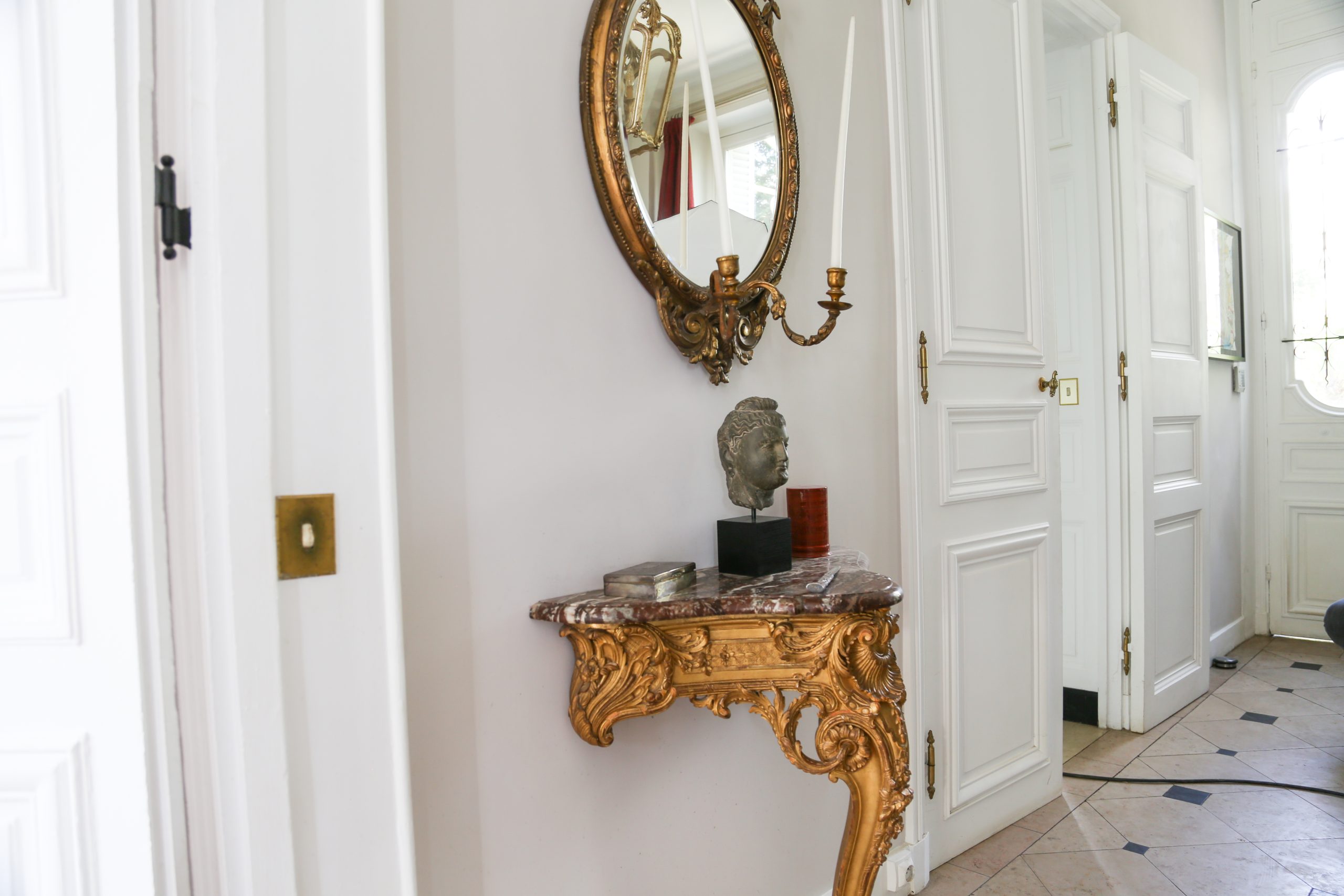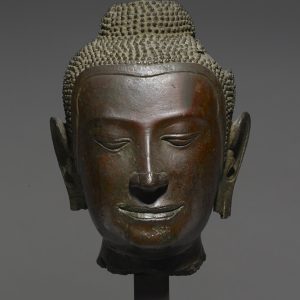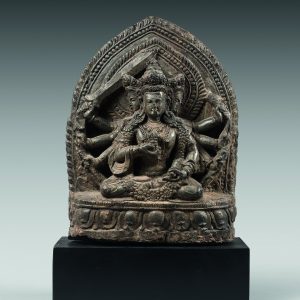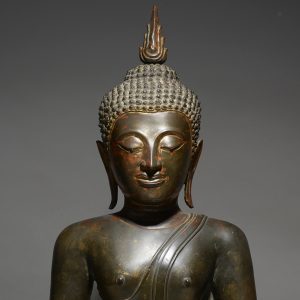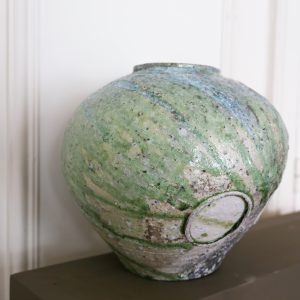Head of Buddha
Schist
Ancient province of Gandhāra
2nd-3rd century
H. 18 cm
360° View
Description
The first face of the Buddha
This figure of Buddha shows an exceptional quality, characteristic of the most prestigious and high-quality workshops of Peshawar (Pakistan). It is in this region that the figure of the historical Buddha appeared for the first time (563- c. 480 BC), whose literature and abundant artistic productions contributed to the diffusion of the Buddhist doctrine along the ancient roads of the silk. The head, very slightly tilted, gives off according to the codes of “Greco-Buddhist” art of Gandhāra a feeling of fullness and piety. Conforming to the distinctive iconographic prescriptions which characterize the representations of Śākyamuni (lakṣaṇa), the face has a tuft of hair or ūrṇā between the eyebrow arches, a symbol of his omniscience, while the eyelids, half-closed, are the sign of his deep meditation. The mouth, small and fleshy, almost sensual, is characteristic of the Gandhāran naturalist style, as well as the hair treated in fine wavy locks brought back in bun on the top of the head, at the place of the uṣṇīṣa.
A witness to the artistic effervescence of Gandhāran school
A perfect illustration of the art of Gandhāra at its peak, this head is an example of the Indo-Hellenistic artistic and cultural interbreeding which expresses itself fully under the royal patronage of the Kuṣāṇs or Yuezhi rulers (1st century BC-240 AD). Alongside the old aniconical representations, this figure deploys an iconography whose codes are permanently fixed throughout History. It testifies to the contributions of Greek statuary through the classicism of this Apollonian face, its naturalism, visible in the overall plastic harmony of the face, as well as the Indo-Parthian influences in stylistic codes, in particular the representation of the bun devolved on the rider princes.
A high quality shist
The preferred material of this Greco-Buddhist art, schist is present in various forms throughout the Gandhāra region and its periphery. This sculpture thus reveals great stylistic similarities with the creations of Takt-i-Bahi in the outlining of the reliefs of the hairstyle as well as the stereotypy of the faces. The quality of the dense shale used for this sculpture is another indication of its achievement for an elite patron. The use of this soft stone allows a lot of ease in its treatment and to obtain, like here, faces with an incredibly supple shape. The mouth, with its particularly sensitive production, is a good example. On the reverse, the presence of a prop connecting the back of the skull to the nimbus, an iconographic device of Iranian origin that highlights the figure of the Blessed One, is still visible.
Provenance: Private collection, the Netherlands, acquired from De Ruimte Gallery, Eersel (Jean and Marcel Nies) before 1985.

